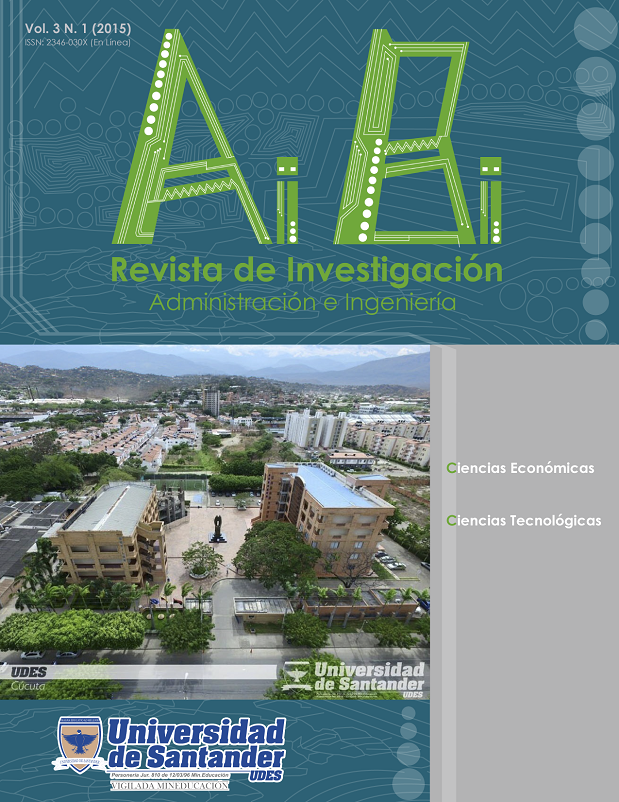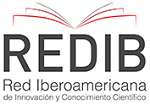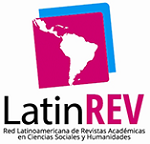Model to evaluate social relevance in the academic offer of Francisco de Paula Santander University.
Keywords:
Relevance, indicators model, academic programs, university.Abstract
The research is framed within the quantitative approach and mode of Feasible Project was held at the Francisco de Paula
Santander, Northern Department of Santander (Colombia) University with populations of entrepreneurs, high school students, alumni and
representatives of clusters different sectors of the region. The fundamental objective of the research is to design a proposed model to evaluate
the social relevance in academic programs offered at the Francisco de Paula Santander (UFPS) University. The importance lies in the need to
create a model that links characteristics, needs of stakeholders, perceptions, supported statistically, that determine interactions of intervening
factors, explain types of innovation required by the productive sector of the region and to respond to needs Nortesantandereana members of
society. Data collection was conducted through surveys, semi-structured interviews, panel, mathematician SWOT, using six sigma. The
selection of indicators includes indices linking systems at national and international levels, and hierarchical multivariate analysis, principal
components. The creation of the model followed different phases as a result of information analysis and includes diagnostics, measurement,
analysis, improvement, monitoring and control, also contains models to analyze population projections to support decision-making. For the
analysis and interpretation of information diagramming tools, capability studies, multivariate analyzes were used, analysis was carried out
following model Rash through Item response theory, design of experiments and using triangulation as an element involved in obtaining
multiple views of the research problem. The proposed model expected to sustain the role and social mission of the UFPS to offer knowledge
producing, sharing and socializing in the innovation system in the formation of human capital for society and companies in the region. The
model was validated through structural analysis.
References
F. García, Una aproximación al concepto de universidad pertinente. [Versión Electrónica]. Último acceso Septiembre de 2006 sitio web http://www.ucla.edu.ve/dac/investigaci%F3n/compendium5/pertinente.htm.
UNESCO, La educación superior en el siglo XXI visión y acción. Conferencia mundial sobre educación superior. [Documento en línea]. Disponible: http://unesdoc.unesco.org/images/0011/001163/116345s.pdf. [Consulta: 2012, febrero 5], 1998.
A. De la Orden, Los modelos jerárquicos lineales y su aplicación a la investigación educativa [Investigación educativa] Madrid: Anaya, 1999
Conferencia Regional sobre Políticas y Estrategias para la Transformación de la Educación Superior en América Latina y el Caribe. La Habana, Cuba. Informe de la CRESALC-UNESCO, Caracas, 1996
UNESCO Documento de Política para el Cambio y Desarrollo en la Educación Superior. Disponible en www.uneco.org/educatión/educprog/wche/declaration-spa.htm-78k. 1995
UNESCO Políticas, estrategias y planes regionales, subregionales y nacionales en educación para el desarrollo sostenible y la educación ambiental en América Latina y el Caribe. Decenio de las Naciones Unidas de la Educación para el Desarrollo Sostenible 2005-2014, 2009
J. C, Gottifredi Pertinencia. Universidad de la República, Montevideo. 1996
ANUIES (2000) Asociación Nacional de Universidades e Instituciones de Educación Superior, 2000. Disponible en .www.ead.urbe.edu.cu, 2000
Agenda de Guadalajara, II Encuentro Internacional de Rectores de Universia, Documento de conclusiones: Disponible en: http://www.universia.net/nosotros/files/Agenda_Guadalajara.pdf, 2010
R. Hernández, C. Fernández, P. Baptista, Metodología de la investigación. 4° ed. México: McGraw-Hill Interamericana, 2006
B. Wheat y C. Mills, Seis Sigma. Una parábola sobre el camino hacia la excelencia y una empresa esbelta. Bogotá: Grupo Editorial Norma, 2004.
Downloads
Published
How to Cite
Issue
Section
Downloads
License
The journal offers open access under a Creative Commons Attibution License

This work is under license Creative Commons Attribution (CC BY 4.0).








